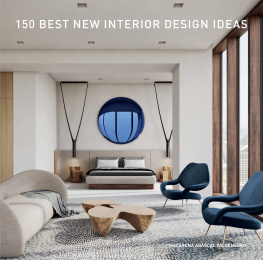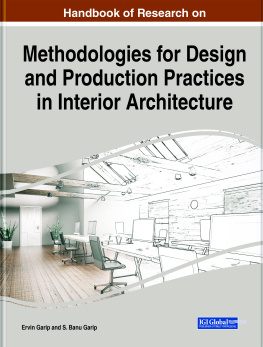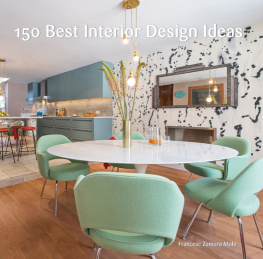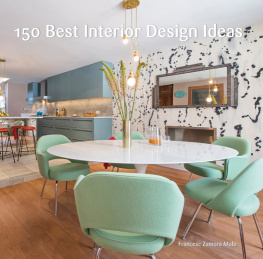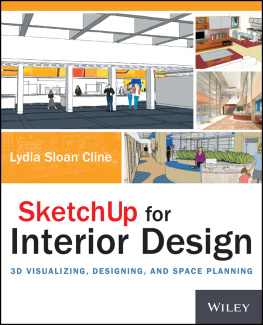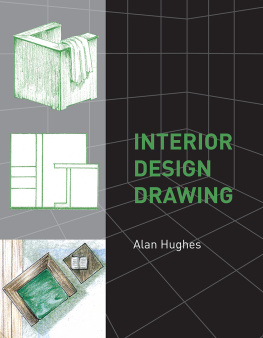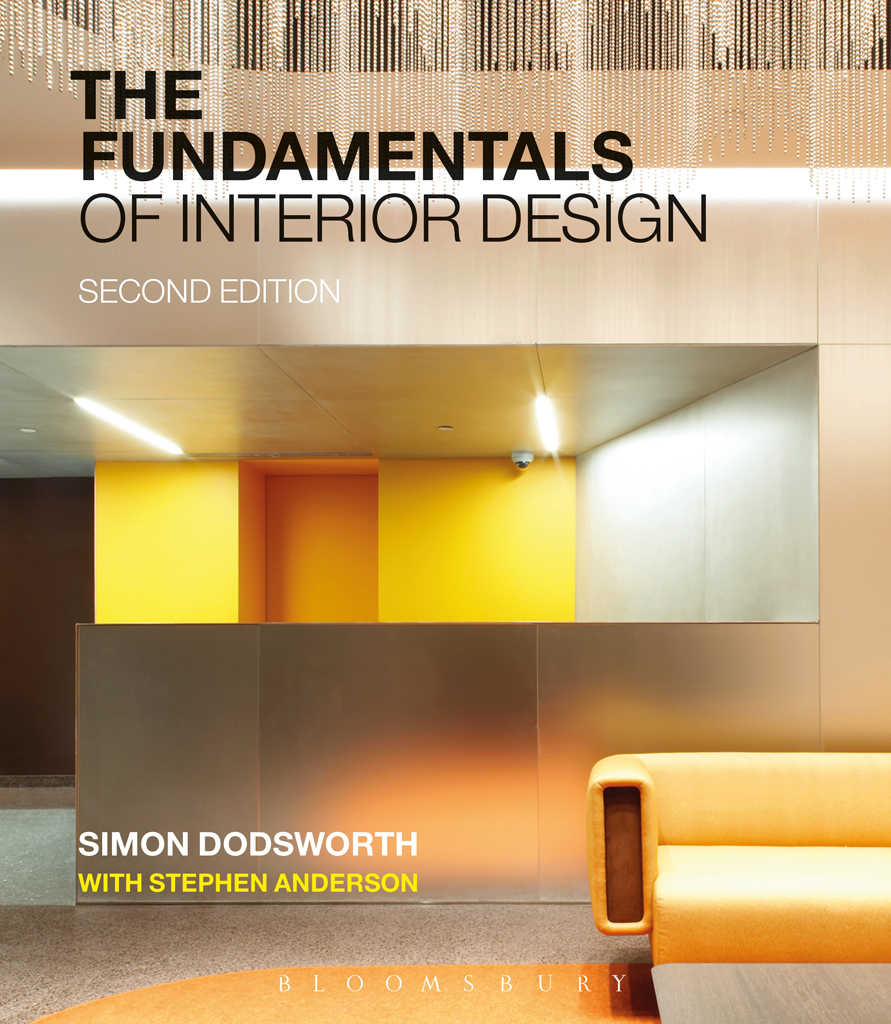
Simon Dodsworth is Director of Interior Design at KLC, London, UK.
Stephen Anderson lectures in Interior Design and Architecture at the University of Portsmouth, UK.
Also available from Bloomsbury:
Basics Interior Design 01: Retail Design
Basics Interior Design 02: Exhibition Design
The Fundamentals of Interior Architecture

www.fairchildbooks.com
www.bloomsbury.com
Contents
Introduction
To be creative is part of the human psyche. It is one of those traits that sets us apart from other animal species, and we have practiced it for millennia. Even when our prime need was to find food and shelter, we felt a desire to leave our mark on the environments that we inhabited. Whether this was to satisfy some deep spiritual calling, or a method of passing on vital knowledge to fellow group members, or whether it was simply a way for an individual to satisfy an urge to leave his mark for future generations, we will never know. For just as long, people have turned inquisitive minds to ways of solving problems and dealing with the issues that have faced them in the struggle to survive: problems such as how to work more efficiently, how to live more comfortably, and how to be safe from danger.
Today, these primitive and fundamental indicators of human nature may be expressed in more sophisticated and developed ways, but the primal simplicity of our human desire to make a better and more comfortable world for ourselves is evidenced through, among other things, how we organize the spaces that we inhabit and the aesthetic that we make for them.
As we have become more affluent and blessed with more leisure time, style has become more important to us, and it is something with which we want to imbue our homes. But style is a very personal notion, so why should anyone look to employ someone else, such as an interior designer, to tell them what is right? Why, for that matter, should you as a designer presume to impose your ideas upon a space that isnt your own? The answer is this: interior design is about so much more than what looks right. It is about taking a holistic view of the way individuals use and enjoy the spaces they inhabit. It is about finding and creating a cohesive answer to a set of problems and dressing the solution so as to unify and strengthen our experience of the space. Many people understand this, and they also understand that they do not have the necessary insight, skills, and intellectual grasp of the issues to tackle the job themselves. And so there is the need for professional interior designers.
What is interior design?
Good interior design adds a new dimension to a space. It can increase our efficiency in the way we go about our daily lives, and it adds depth, understanding, and meaning to the built environment. Thoughtful and well-crafted design makes a space easier to understand, and experiencing such a space lifts the spirit, too. It is, therefore, not just about the aesthetic; it is a practical and philosophical discipline. Beautiful spaces show a logical and rational questioning of the status quo and can be an honest attempt to find new and exciting ways to lead our lives. In some areas of design, such as hospitality design (the design of bars, restaurants, hotels, etc.), the designers work can play a large part in creating a successful business for the owners.
There is often confusion between the terms architect, interior architect, interior designer, and interior decorator. In truth, the distinctions between these professions are not absolute, and there is a great deal of overlap. Where boundaries are drawn depends upon several factors. In a professional sense, it may well come down to a matter of which country the designer is working in (or perhaps more properly, which regulatory system the designer is working under). Though not definitive, the explanations below give an indication of the different roles and responsibilities of those whose work involves the design of habitable space.
Architects define the volumes (spaces) that combine to make up a building through the careful composition of planes (walls, floors, ceilings). They are trained to design structures from scratch, though they may well be involved with the refurbishment of an existing structure. They will take intellectual and practical considerations into account, and the building design will be informed by its location. Some architects will limit their involvement to this, while others will also consider furniture and fittings in addition to materials and finishes.
Interior architects generally focus their skills on existing structures and repurposing them to suit new functions, and as such they will often see their work as a sustainable way of dealing with the built environment. They will pay a great deal of regard to the previous life of a building and usually allow this knowledge to provide some connection between the building and their newly created interior.
Interior decorators generally work with clients who want to change the look and feel of a space without resorting to major structural change or intervention. Through the use of color, light, and surface finishes, they will transform the space, perhaps making it suitable to function in a different way from which it was originally designed. Their work may well be informed less by the previous history of the building or its location.
Interior design spans the ground between interior architecture and interior decoration. The scope of the projects undertaken by interior designers will vary, from the purely decorative to ones where a great deal of structural change is required to meet the brief. Whatever the scope, interior designers will approach a project with a desire for interpretation and meaning within their work that will generally set them apart from interior decorators. An interior designer will competently handle the space planning and creation of decorative schemes at the same time as considering major structural changes. However, being trained in only the basics of structure, designers will recognize when to call on other professionals (such as structural engineers) to ensure that their proposals are legal and safe. In fact, architects, interior architects, interior designers, and interior decorators will all call on other specialists where appropriate to help fully realize their ideas.
Why become an interior designer?
Being an interior designer puts you in a privileged position. You are trusted by the client, and in the case of commissions by private clients, you have intimate access to their homes and way of life. You are given freedom to create spaces that will become an everyday part of their lives. You can propose radical planning solutions that may overturn preconceptions. According to the budget, you will source and curate all the elements that make up the interior space. You can select beautiful pieces of furniture, interesting and unusual finishes, and color schemes that together create drama, serenity, or whatever other mood the client wants for their space.
For a creative personality all of this is satisfying in itself, but the problems that the global community will face through the coming decades offer lots of opportunities to expand our creativity further. Climate change, population growth, and unsustainable consumption are causing problems that need to be addressed, and the solutions are almost all to do with the way that we lead our lives. Current ways of working and living will change, and whether these changes turn out to be sudden and dramatic, or slower and more subtle, changes in lifestyle will mean that designers are required to navigate new landscapes and propose alternative routes for clients to allow them to meet their commitments as part of a new global, responsible society while still maintaining a sense of well-being derived from their immediate surroundings.




